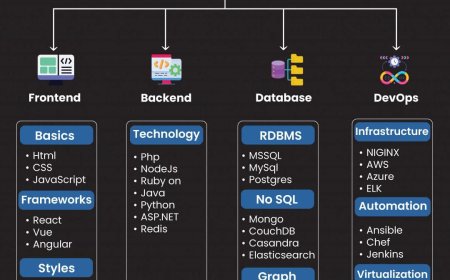Anatomy of a Digital Black Market
Briansclub emerged as a dominant force in dark web carding, trading millions of stolen cards before its dramatic downfall. Learn how it operated, and what its legacy means for digital security

In the sprawling digital underground, few names have carried as much weight as Briansclub. Known as one of the most prolific stolen card data marketplaces in darknet history, it reshaped the cybercrime landscape by streamlining the trade of compromised payment information.
Between its rise as a leading dark web marketplace and its eventual breach and disappearance, Briansclub exposed critical gaps in global cybersecurity. In this in-depth analysis, we explore its structure, reach, and enduring impact on both cybercriminals and the institutions trying to stop them.
A Black Market With Corporate Precision
Briansclub was not the first carding platform, but it was among the most refined. Unlike amateur-run forums that relied on basic threads and PMs, this marketplace adopted features from legitimate online retailers:
-
Clean user interface with dashboards for orders, deposits, and history
-
Categorized card data by country, bank, and BIN
-
Instant downloads post-purchase
-
Vendor vetting system to maintain data quality
-
Refund policies for outdated or inactive cards
It offered a seamless shopping experiencefor illegal goods.
The Core Inventory: What Was Sold?
Briansclubs database contained millions of stolen records, uploaded by global contributors. These primarily included:
-
Magnetic stripe dumps (Track 1/2) for physical card cloning
-
CVV data for online transactions
-
Fullz (full identity profiles: name, address, DOB, SSN, etc.)
-
Bundles sold in bulk with discounts based on volume
Buyers could filter by criteria such as:
-
Issuing bank
-
Geographic location
-
Card type (e.g., platinum, debit, business)
-
Data freshness
Prices varied accordingly, often ranging from $7 to $120 per card.
The Criminal Supply Chain
Briansclub functioned as the distributor in a larger supply network. The card data typically originated from:
-
POS malware deployed in retail environments
-
Remote access trojans (RATs) on infected systems
-
Data breaches of hotels, restaurants, e-commerce sites
-
Darknet suppliers that provided mass dumps from hacked sources
-
Phishing kits used to dupe cardholders directly
This supply was endlessBriansclub received regular data injections to maintain an always fresh inventory.
Notoriety Through Irony
The name Briansclub was a twisted joke aimed at cybersecurity journalist Brian Krebs, a frequent thorn in the side of carding forums. In a surprising turn, Krebs would later become one of the first to gain access to the sites internal breach records in 2019helping banks invalidate compromised cards.
What started as a taunt turned into a headline that symbolized the platforms undoing.
The 2019 Collapse: Briansclub Gets Breached
In an ironic reversal of roles, Briansclub itself was hacked. The breach, disclosed in 2019, revealed:
-
Over 26 million payment card records
-
Administrative access logs and infrastructure blueprints
-
Lists of active vendors and revenue statements
-
Wallet addresses tied to millions in cryptocurrency
-
Buyer records and login activity
This data was quietly handed to banks and cybersecurity firms, allowing them to block fraud attempts in real time.
A Turning Point for Cybercrime
Briansclubs takedown had a domino effect on the digital black market. It exposed just how large and industrialized carding operations had becomeand how fragile they were when exposed.
Many similar sites went into hiding, including:
-
Jokers Stash (later shut down)
-
Ferum Shop
-
BidenCash
-
AllWorld.Cards
Newer marketplaces have since emerged, but none have regained the same reputation or scale.
How the Industry Responded
The leak triggered a coordinated global response. Financial institutions were able to identify and invalidate cards, while law enforcement agencies gained valuable intel on the players behind the scenes.
Cybersecurity firms also took note, using the incident to improve tools and strategies:
-
Deploying AI-based fraud detection systems
-
Launching dark web monitoring services for clients
-
Creating early warning systems for data exposure
-
Improving tokenization and payment encryption standards
Briansclub became a case study in how effective threat intelligence can prevent fraud at scale.
Lessons for Businesses
If Briansclub proved anything, it's that criminals dont need to breach your systems directly. They can exploit your weak linksfrom outdated POS software to untrained employees.
Key takeaways for organizations:
-
Use end-to-end encryption for all financial transactions
-
Conduct regular penetration tests and system audits
-
Deploy multi-layered fraud prevention tools
-
Invest in employee training on phishing and device security
-
Monitor the dark web for leaked data connected to your brand
Prevention costs far less than breach recovery.
What Consumers Should Know
The average consumer may never visit the dark web, but their data can still end up there due to third-party breaches. Awareness is the first defense.
Protect yourself with the following steps:
-
Sign up for real-time transaction alerts from your bank
-
Use credit cards, which offer better fraud protection
-
Avoid saving card info on shopping sites
-
Use virtual cards for online purchases
-
Check your credit reports and account activity monthly
Cybercrime is often a crime of opportunity. Dont give it one.
Briansclubs Lasting Impact
Though long gone, Briansclub left a blueprint for both criminals and defenders. Its highly organized infrastructure showed that cybercrime could be scaled like any tech startupcomplete with UX design, customer support, and marketing tactics.
At the same time, its downfall showed the power of cooperation between journalists, banks, and cybersecurity experts. When information is shared in time, damage can be prevented.
Final Thoughts
The story of Briansclub is one of contradiction: a criminal empire that ran with the efficiency of Silicon Valley, brought down by the very forces it mocked. Its operations affected millions and demonstrated the global scale of digital fraud. But its exposure also sparked reforms, innovations, and heightened awareness.
As technology continues to evolve, so will cybercriminals. But the lessons from Briansclub will remain crucial in building a safer digital future





























